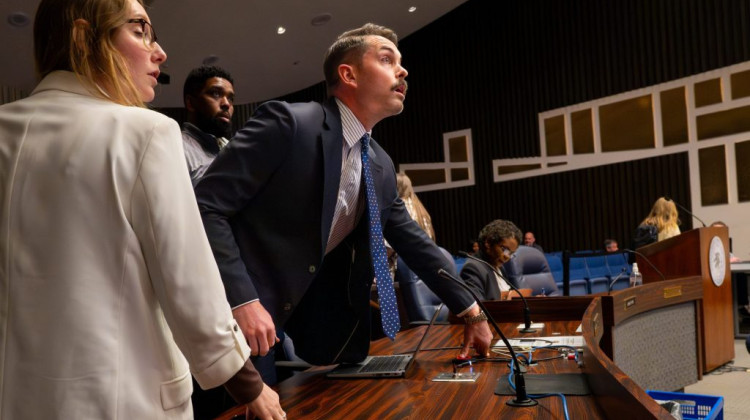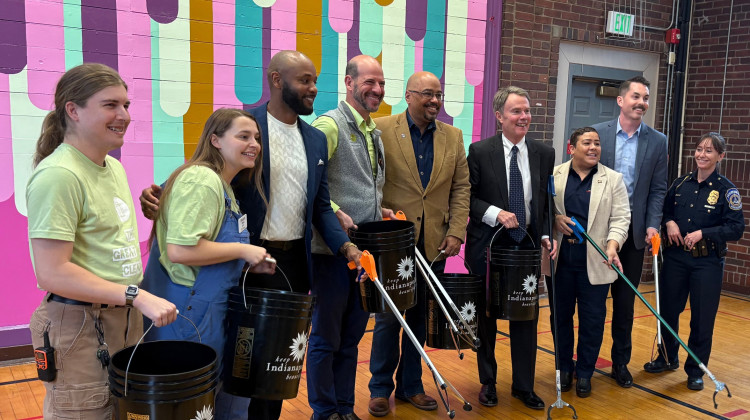
The TUM Autonomous Motorsport team celebrates along the yard of bricks at the Indianapolis Motor Speedway after winning the Indy Autonomous challenge.
Samantha Horton/IPB News
After about two years of designing and building, the Indy Autonomous Challenge crossed the finish line Saturday at the Indianapolis Motor Speedway. The international competition put each of the nine teams' programming skills to the test.
The challenge showcased driverless cars taking off and stopping, avoiding obstacles and going as fast as possible.
During the roughly three hours of competition, weather was less than ideal for the cars on the track with temperatures in the 50s and sprinkles of rain.
Paul Mitchell is the president of Energy Systems Network, a nonprofit that co-organized the event. He said he believes the challenge demonstrated several things including how the driverless car was able to know how fast it could go.
“Another thing we were able to do is prove that the robot driver could find the limits of that race car, at this track, under these conditions,” said Mitchell. "They would have gone over 150, 160, I've no doubt in my mind, if the weather was warm, the tires were warm, it wasn't a slick track."
In the final round, a crash from PoliMOVE and a programming error by EuroRacing led to TUM Autonomous Motorsport completing the two timed laps with the fastest average speed.
Team leader Alex Wischnewski said the $1 million prize money is huge for his team’s university in Germany, Technische Universität München.
“That prize is going to bring us in a position where we can really, like, think about what's the next step, and quite freely design what we want to do. Because it's giving us the opportunity to work on the things which we feel are important,” said Wischnewski.
He said the competition showed that not only did his team make the right design decisions, but also worked together to quickly improve over a limited time.
The challenge drew hundreds of people in person to the speedway and thousands watching over a live stream to see driverless cars compete.
Mitchell’s happy overall with how the competition went but said he hopes to get the general public more aware of autonomous technology.
"We'll probably try to blast some of these videos out to Joe and Jane Public to say, 'look at these cars going 140 miles an hour on the Indianapolis Motor Speedway.' And kind of, you know, use that to get that information out more broadly," said Mitchell.
Mitchell said he hopes through outreach more people will be aware of autonomous technology and feel more comfortable purchasing a car with it in the future.
Contact reporter Samantha at shorton@wfyi.org or follow her on Twitter at @SamHorton5.
9(MDAyMzk1MzA4MDE2MjY3OTY1MjM5ZDJjYQ000))
 DONATE
DONATE






 Support WFYI. We can't do it without you.
Support WFYI. We can't do it without you.